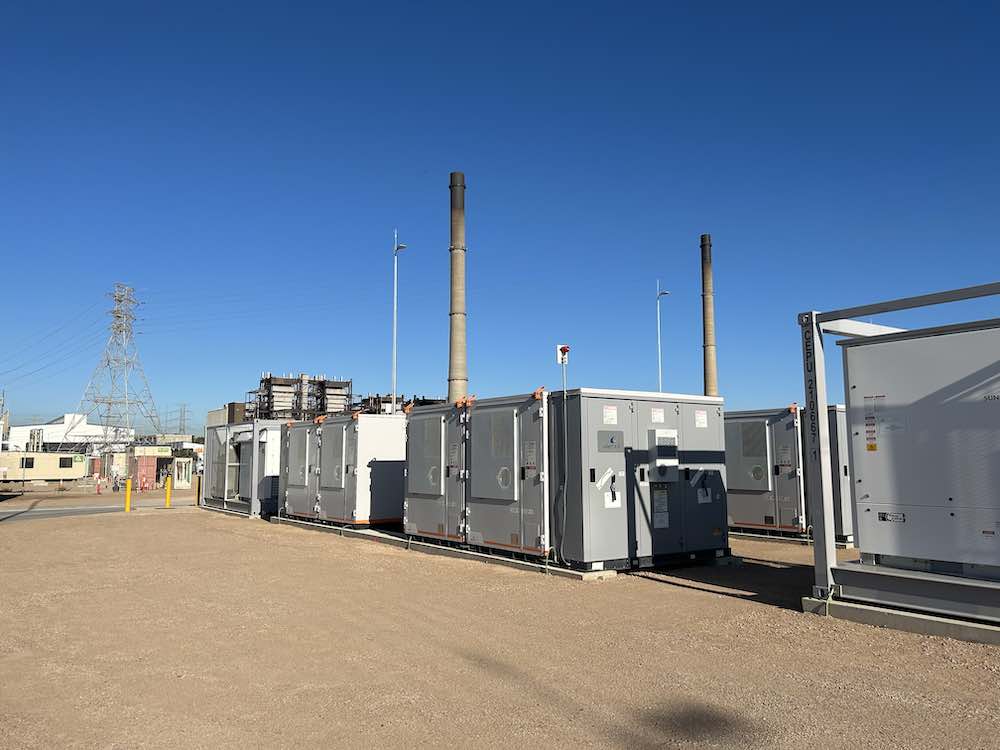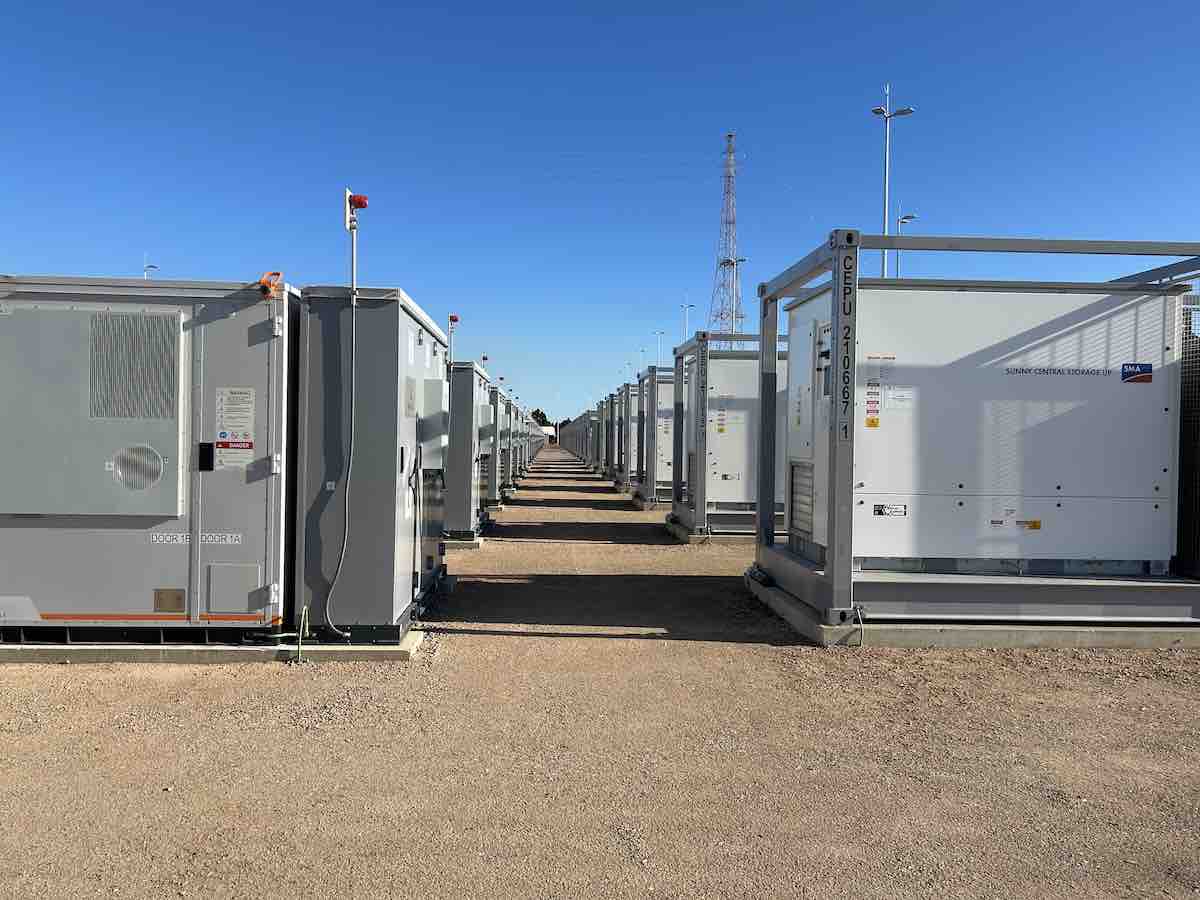When AGL’s 250MW/250MWh Torrens Island battery is fully commissioned sometime in the coming couple of months, it will be a bittersweet moment for the big three energy gen-tailer.
On the one hand, the Torrens battery ticks off a major energy transition milestone for AGL as its first completed large-scale energy storage system. It will also take the title of the biggest in South Australia, trumping the OG big battery, the Hornsdale Power Reserve.
On the other hand, the Torrens battery represents a real and present danger to the economic and technical viability of AGL’s main business at Torrens Island – gas power generation and services.
“I think most probably we are cannibalising our own business,” says AGL COO Markus Brokhof. “But, you know, if we don’t cannibalise it then somebody else will … Because at the end of the day, batteries are also in competition with gas plants.”
Certainly, the addition of more grid-connected batteries to South Australia’s world-leading fleet of solar and wind generation capacity will be one of the last nails in the coffin for aging combined-cycle gas plants like AGL’s Torrens Island B, which is scheduled to exit the market in mid-2026 at 50 years of age.
That plant is based on steam turbine technology that, while cutting edge at the time it was built in the early 1980s, is not so useful in a renewables dominated grid where flexibility is key – it takes around 16 hours to power up to full capacity from cold.

Much more flexible is AGL’s Barket Inlet Power Station, or BIPS, which was switched on in 2017 on Torrens Island and can power up in just five minutes.
And while BIPS still has plenty of life left in it – and plenty of as-yet unchallenged advantages over a one-hour battery like Torrens – the two newest facilities on the Island will still be competing in a number of ways; particularly so if AGL takes up its option to expand the battery’s capacity to 1000MWh, or four hours of storage capacity, in the future.
Brokhof says the Torrens battery, once it is fully powered up and connected to the grid, will take advantage of arbitrage opportunities – charge up when there are negative prices during the day and then discharge in the evening peaks; while also providing frequency response auxiliary services to AEMO as well as participating in the capacity market.
At the moment, AGL says the benefit of plants like BIPS is they can jump in to the market when needed and run for as long as they have the fuel – including at times when there is a shortage of renewables.
The downside is that they’re just not needed all that often or for all that long – according to gas and renewables head Kevin Taylor, who started his career at Torrens in 1986, on an average weekday Barker Inlet might run for around an hour-and-a-half at a time in the morning and evening demand peaks.
Still, AGL anticipates that demand for peaker plants like BIPS will increase, in the near term, as more of the large thermal plants exit the national electricity market and more firming is needed.
Brokhof says that at the moment, there is not sufficient long duration energy storage technology readily available to fully replace gas in its role of firming on the grid – and none on the near horizon, either.
And to this end, the company has the licence and approvals in place to build a second BIPS on Torrens, if need be. But Brokhof also concedes that the economics have to change for this to be a viable option for AGL.
“In order to justify [building a new gas peaker] at the moment, our gas peaker would run only a few hours every day… and at the moment… the cap prices are not there where it’s justified to invest.
“And so at the end of the day, it needs either a capacity mechanism or something in addition … in order to justify the investment decision.”
This sums up the sort of precarious no-man’s-land companies like AGL are occupying at the moment in the energy transition, where they have one foot in the past and another in the future. See: From big gas kettle to big battery: The energy “time tunnel” at Torrens Island
At the same time, they are also negotiating changing rules and regulations as they try to find as many revenue streams as possible for new technologies.
For the Torrens battery, AGL is preparing for the facility’s second hold point test, which will be conducted by AEMO and ElectraNet at 150MW, to test the battery’s control systems and make sure the modelling matches actual output.
A third and final hold point test at the full 250MW load will then need to be done before the plant can be commissioned, and one last part of construction also needs doing, which is the addition of what’s called a “harmonic filter.”
The requirement to add harmonic filters has been a point of contention between the market operator and battery developers, who argue it’s a largely unnecessary add-on.
In terms of the Torrens battery, AGL’s Brokhof describes the process as “a bit painful.”
“Our analysis had shown, in the beginning, that we don’t need harmonic filters,” he told RenewEconomy in an interview on Friday.
“And then I think Electranet and AEMO came to the conclusion that we do need harmonic filters.
“But you know, at the end of the day, you will only see this – because these are theoretical calculations … you will only see if this is needed when the battery is fully operational and what kind of impacts it has on the network,” Brokhof says.
“If you want to make a successful transition, I think … AEMO needs to have a better understanding of what is needed because … [for] the next battery which we are building at the moment, it’s in construction, we are having exactly the same discussion about harmonic filters for Broken Hill battery.
“And I see this adding additional costs but also delaying the project, which is not good. And I think that we need to have much… better dialogue and better rules in place into the future.”








